Here are photos of the seedling that Bayli Brosette discovered about 15 yards away from the mother tree — which means it was definitely carried and buried there by a squirrel.
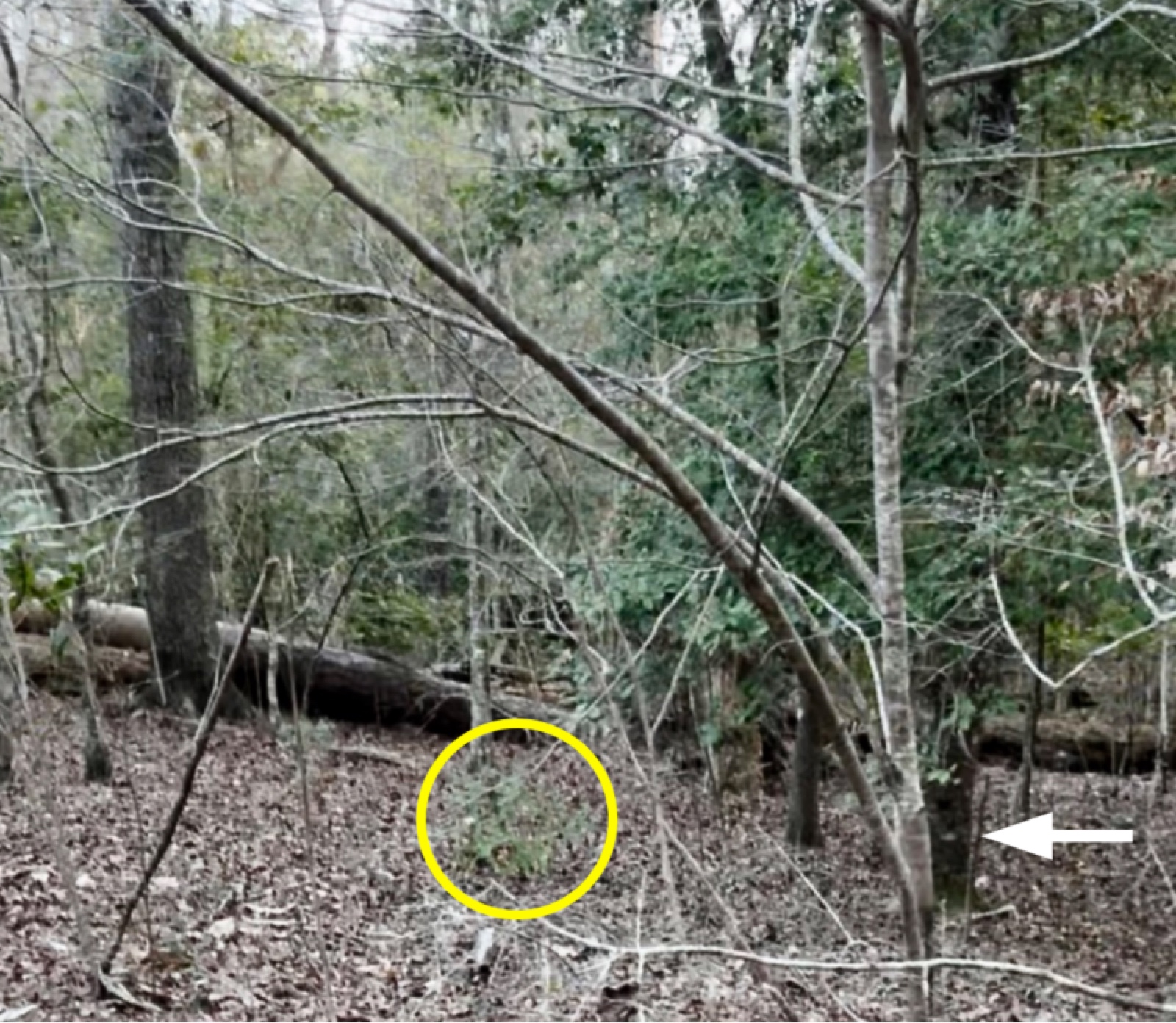
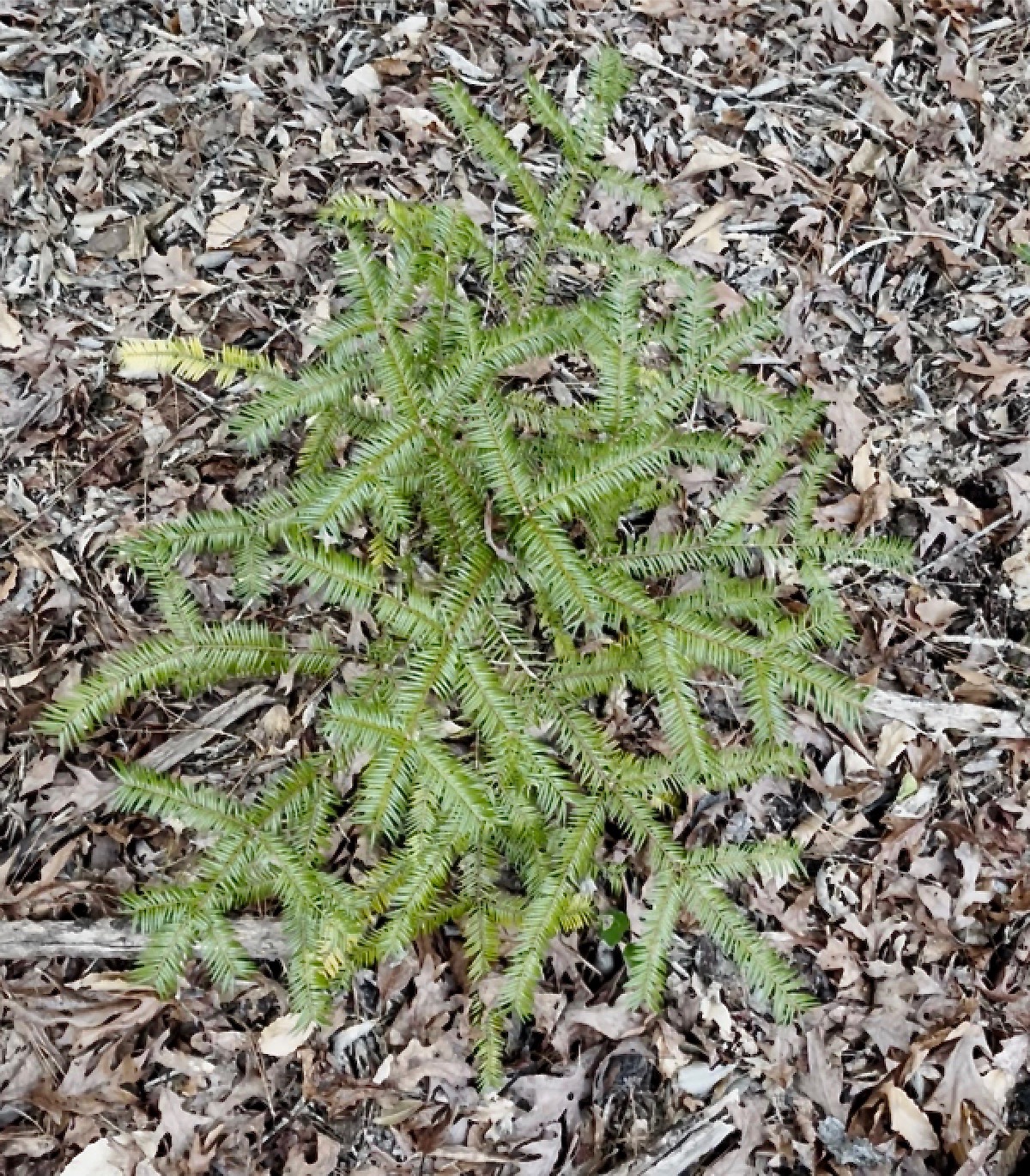
ABOVE LEFT: March 2025 photos. Inside yellow circle is the torreya seedling. White arrow points to the evergreen American Holly, which is shading the seedling.
ABOVE RIGHT: This top-down view obscures how much this seedling is leaning away from the shade of the holly.
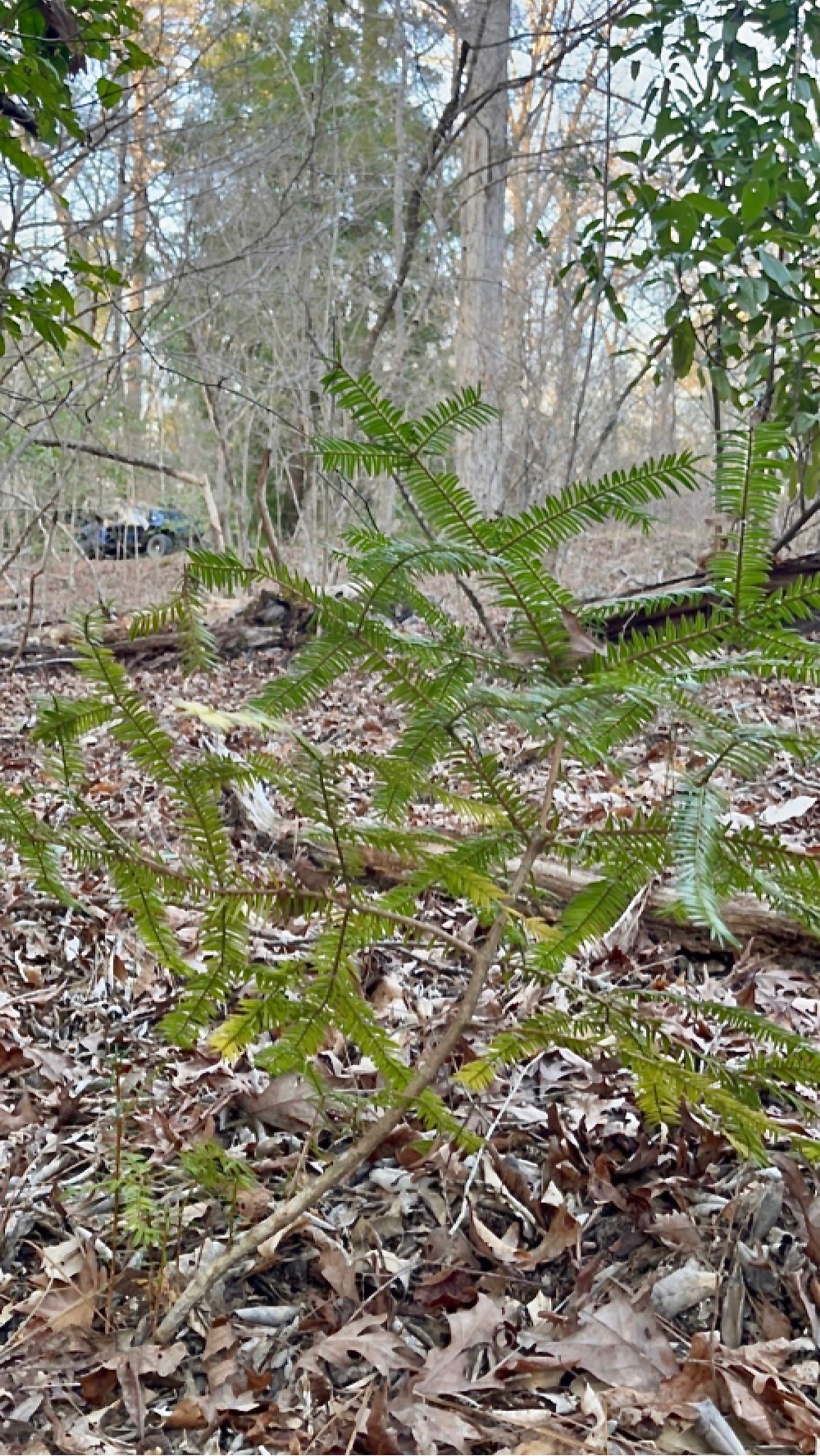
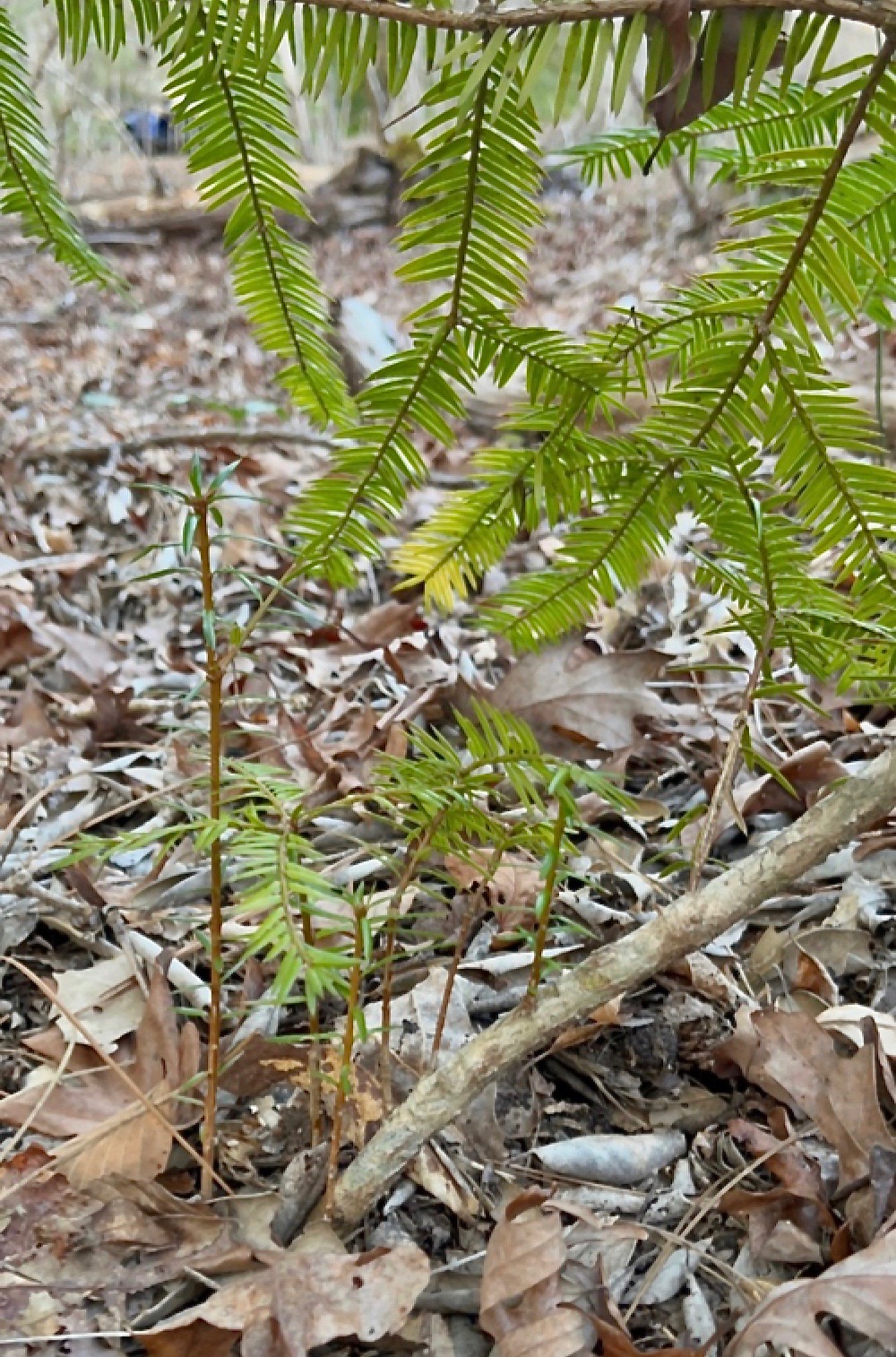
ABOVE LEFT: The torreya has probably been leaning away from the holly its entire life.
ABOVE RIGHT: Five arrested-growth basals arising from the original stem. But notice the vigor from the basal farthest to the left. Connie Barlow, editor, wonders if the recent tornado might have opened up some canopy above, thus encouraging the basal to grow directly skyward and thereby become the new main stem. Looking at the age of the leaning stem, one might guess this seedling is 20 years or older. Next time, the squirrel should choose a site with a deciduous canopy, like under the nearby white oak, which is where the Torreya Guardians group always recommends within-forest plantings.
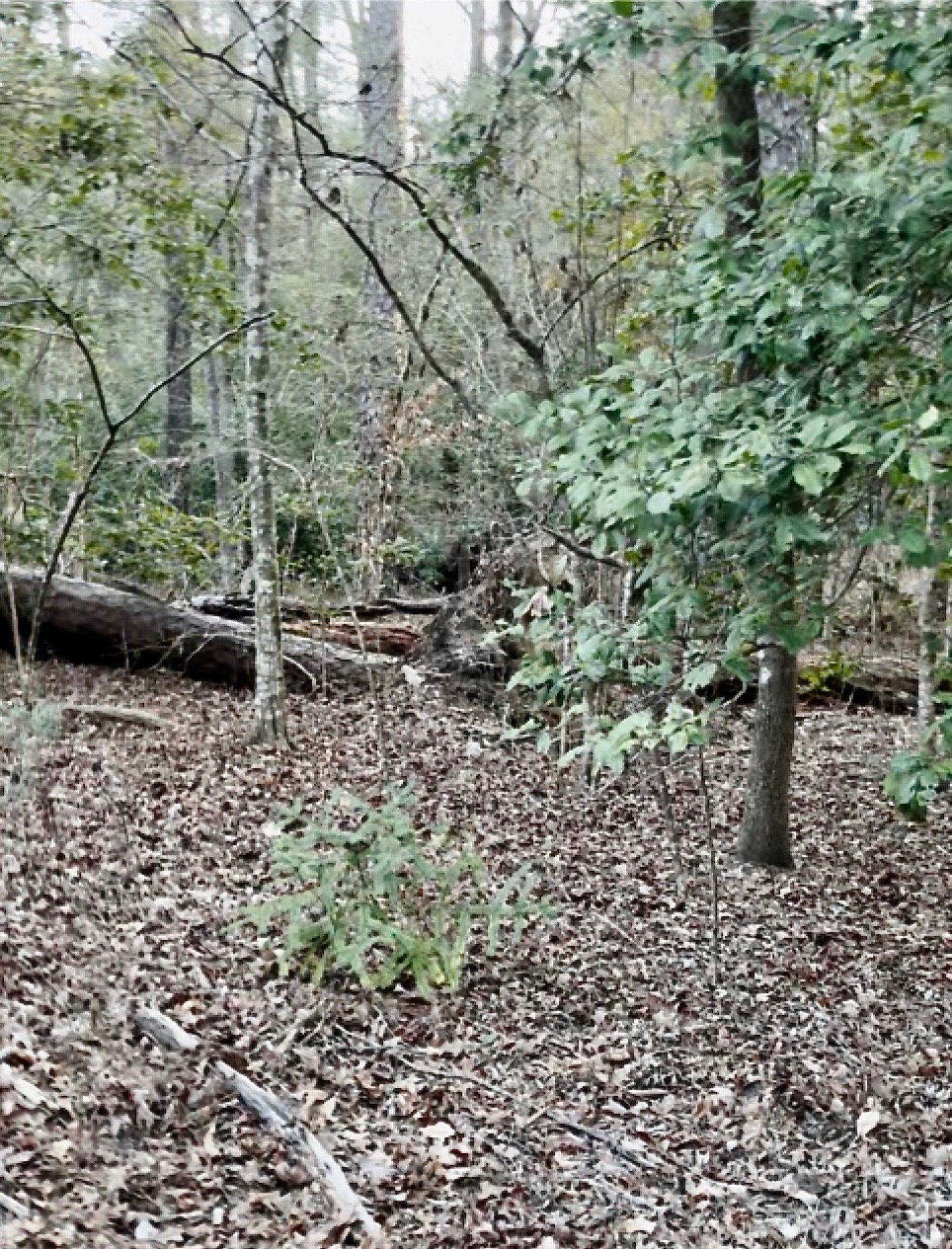
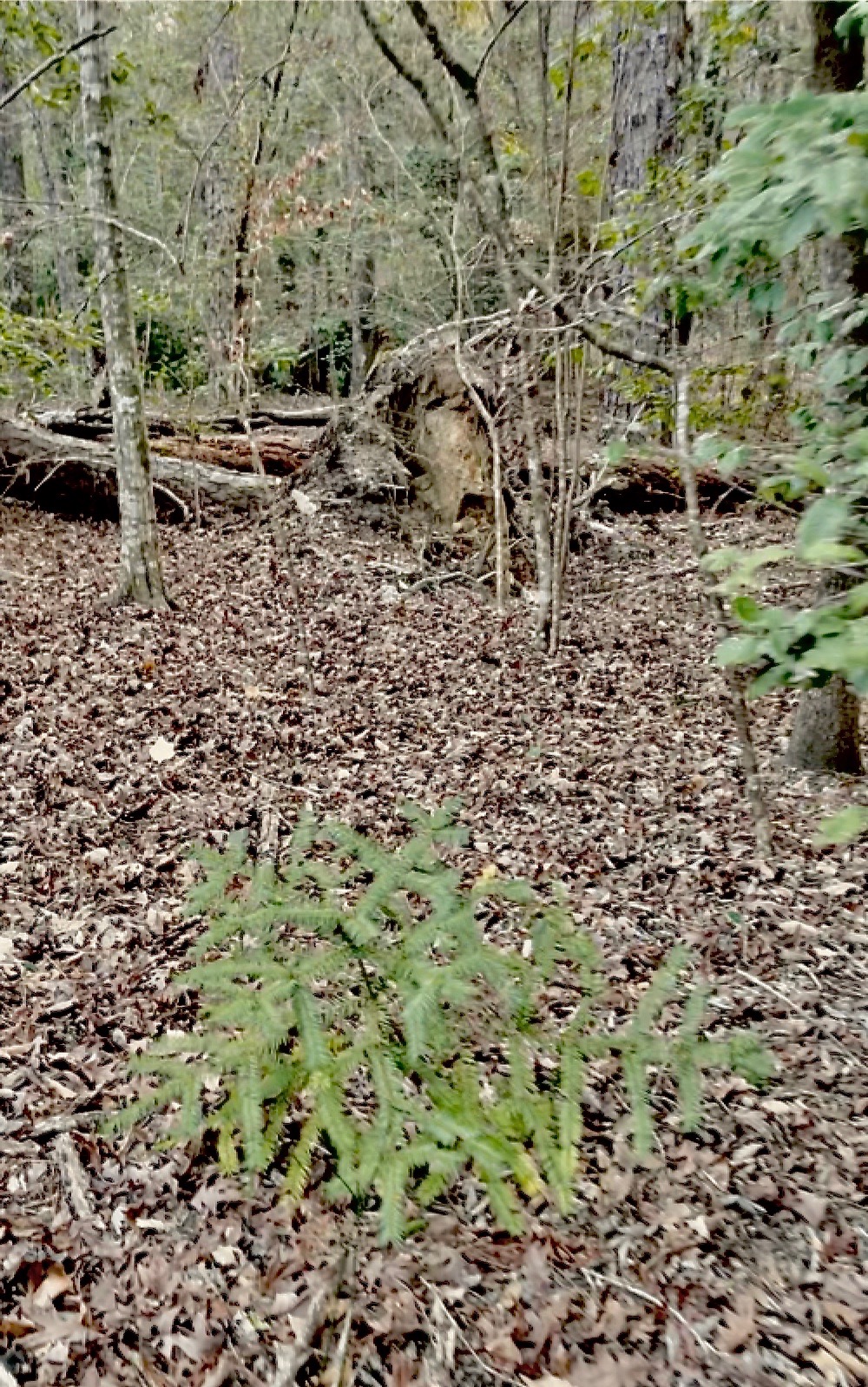
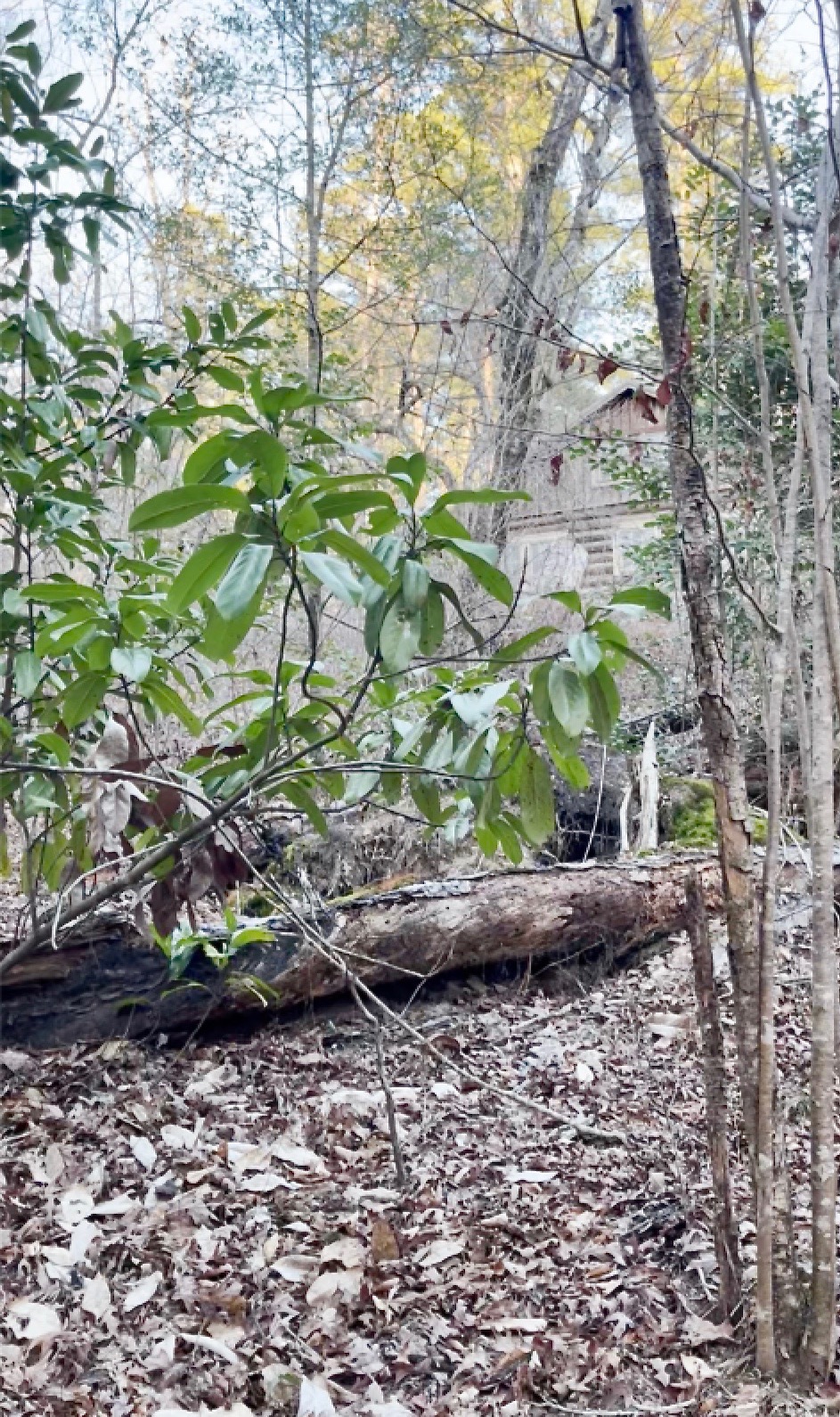
ABOVE LEFT & MIDDLE: More views of the torreya with the evergreen holly leaves above.
ABOVE RIGHT: Camera rotates to the left to view upslope to Caroline Dormon's LOG CABIN.
2025 New crop of SEEDS developing